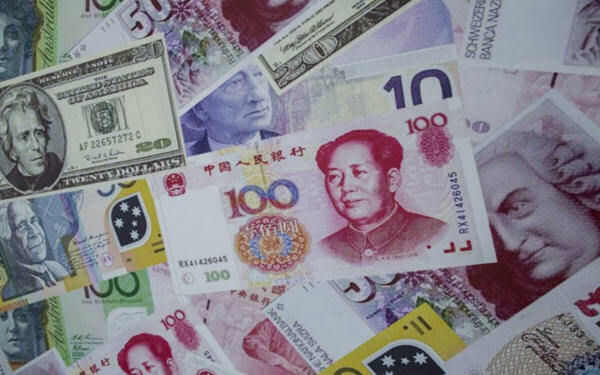
China’s foreign exchange reserves in February rose to their highest in six months as growing optimism over U.S.-China trade talks buoyed the yuan currency, easing worries about capital outflows from the slowing economy.
While China’s economy continues to cool, analysts believe the risk of strong capital outflows has greatly diminished in recent months as the yuan regained its footing and foreign investors piled back into the country’s battered stock markets.
Chinese foreign exchange reserves, the world’s largest rose by $2.26 billion in February to $3.090 trillion, central bank data showed on Thursday, marking the highest level since August 2018.
Economists polled by Reuters had expected reserves would fall $920 million to $3.087 trillion.
The yuan gained 0.09 percent against dollar in February, and is up more than 2 percent so far this year. The dollar index against other major currencies rose 0.6 percent in February.
Financial markets’ bearish outlook on the yuan has seen a remarkable reversal in the last few months due to a host of factors: growing optimism for a U.S.-Sino trade agreement, a soft U.S. dollar and a sharp rise in foreign investors’ inflows into Chinese stocks and bonds.
A Reuters poll on Wednesday showed the yuan is expected to trade around current levels of 6.70 to the dollar in a year’s time, in sharp contrast to January when most analysts forecast it would drop through the 7-mark to decade lows.
As part of a possible trade deal, Washington is reportedly pressing China for a promise that it will not devalue its currency, which has further underpinned the yuan.
A source briefed on the trade negotiations said on Sunday that the world’s largest economies appear close to an agreement that would roll back U.S. tariffs on Chinese goods, as Washington urges China to make structural economic changes and eliminate retaliatory tariffs on U.S. goods.
China’s state planner pledged on Tuesday to increase the flexibility of the yuan’s exchange rate, setting off speculation that a tweak to official wording could mean changes to its tightly managed currency regime.
China’s economic growth cooled to 6.6 percent in 2018, the slowest pace in 28 years, and is widely expected to lose more momentum this year.
GO WITH THE FLOWS?
So far, tighter Chinese capital controls have discouraged heavy outflows like those seen in the last downturn in 2015, but the yuan still fell 5.3 percent versus the dollar last year.
Though not a major factor, increasing inflows of foreign capital have helped offset some of the pressure this year.
Net flows into the Shanghai and Shenzhen stock markets via the Stock Connect scheme as of end February topped 120 billion yuan ($17.9 billion), nearly four times that in the first two months of 2018.
Overseas investors are also showing a strong, sustained appetite for Chinese government bonds as the country’s debt is added into main global benchmarks this year.
For now, analysts are closely watching both trade talks and Chinese economic data for clues on where the yuan goes next.
Even if Washington and Beijing reach a deal to end their trade war, China is expected to implement more measures in coming months to avert the risk of a sharper economic slowdown. More forceful policy easing measures such as interest rate cuts could put the yuan back under the gun.
The value of China’s gold reserves rose slightly to $79.498 billion in February from $79.319 billion at the end of January, as the central bank increased the total amount of gold reserves to 60.260 million fine troy ounces from 59.940 million troy ounces.
The central bank did not explain why it bought more gold.
Source: Reuters